The demand for full-auto firepower was high, but budgets were tight.
The Allies found themselves scrambling to come up with their own lighter and more cost-effective submachine guns.
(Read more about thesubmachine guns of World War II.)
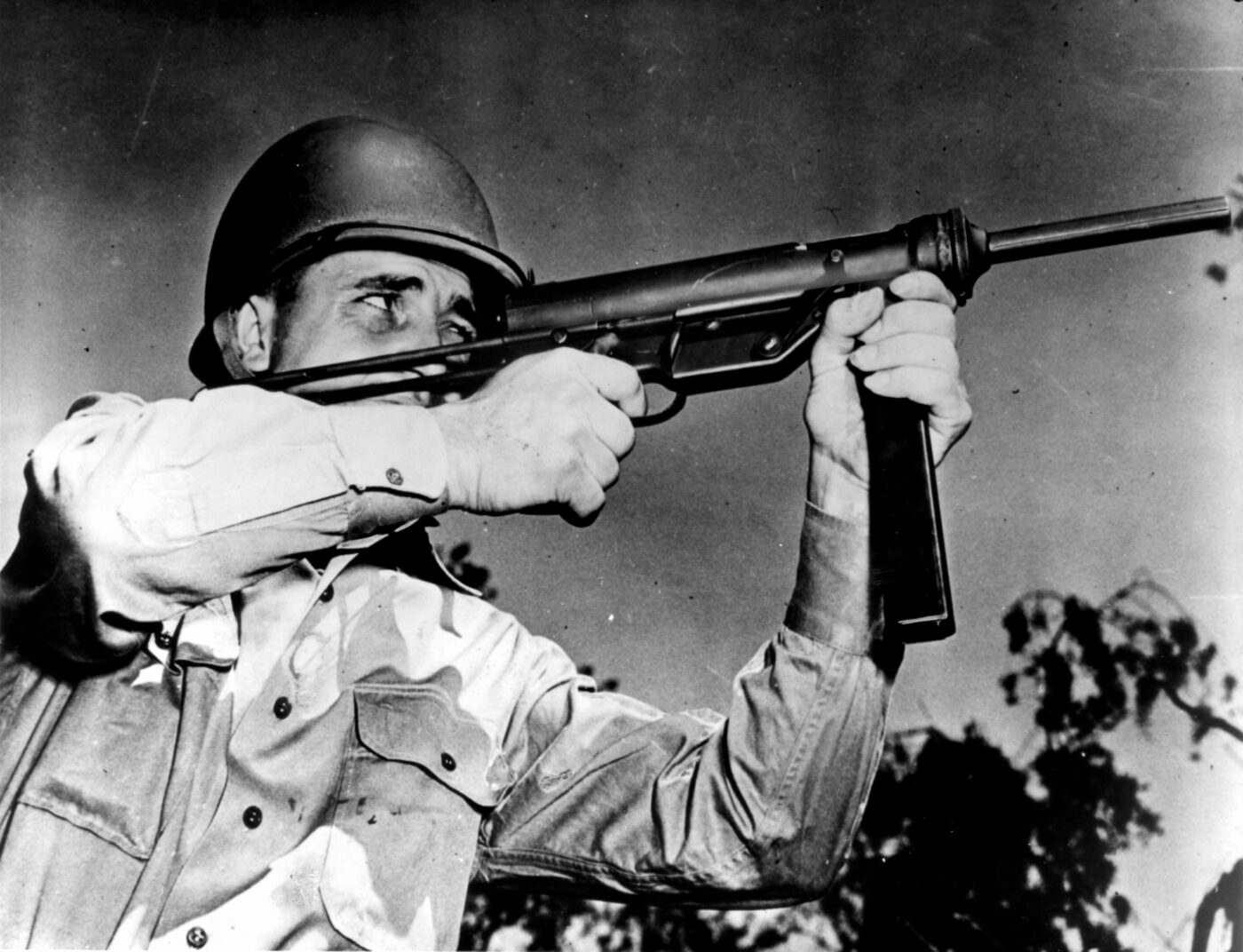
The .45 caliber M3 submachine gun in a live fire demonstration during June 1943. Image: NARA
Is Less, More?
Beginning in 1941,Britain produced the Sten Gun, an innovative, indigenous submachine gun design.
The Sten was lightweight (a little more than 7 lbs.
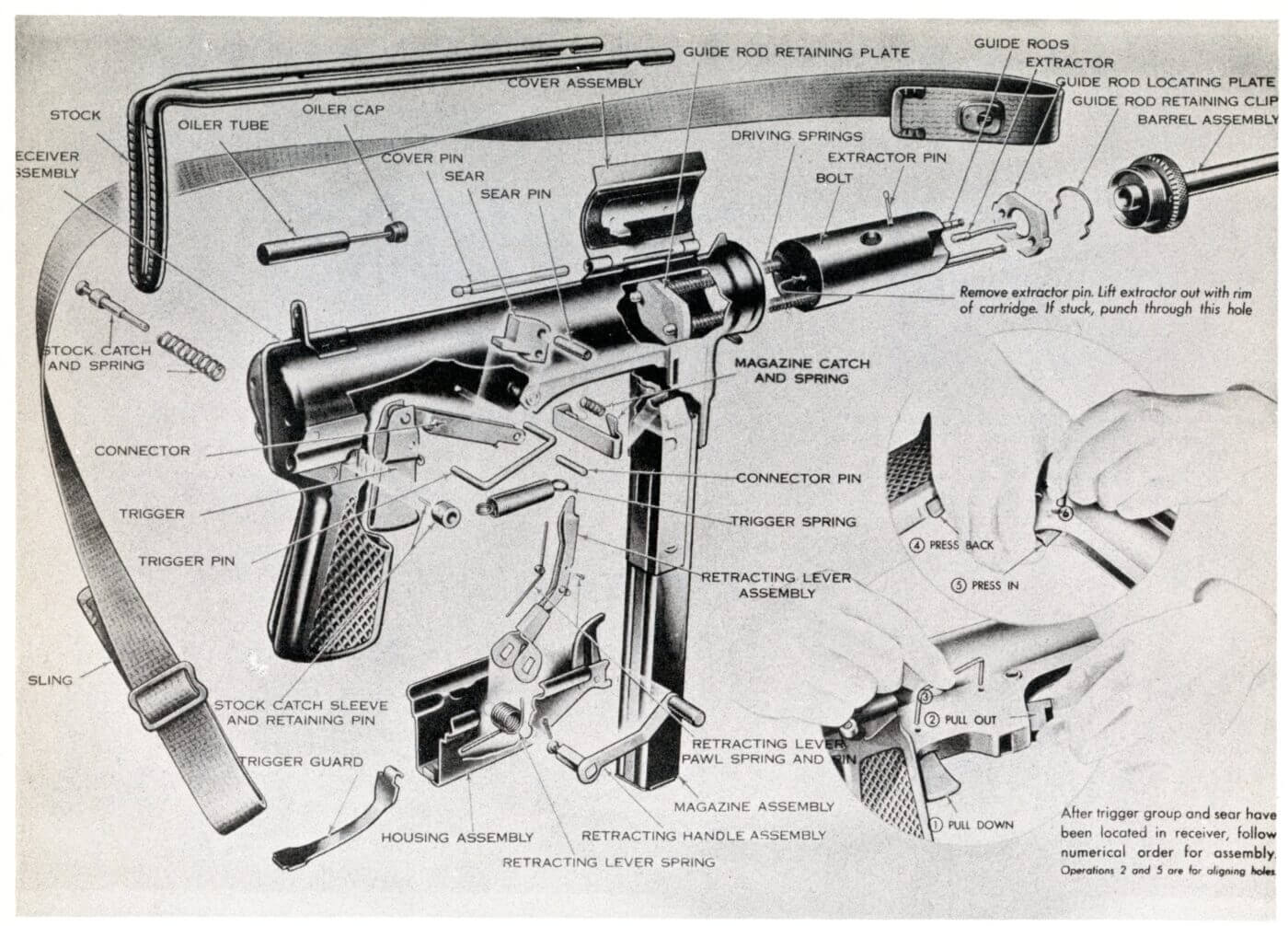
The basic, but deadly mechanics of the M3 “Grease Gun”. Image: SANHS
), simple to use, and exceptionally cheap to manufacture (less than $10 each).
However, the gun was widely considered to be a success.
While the Thompson gun was carefully crafted in its manufacture, it had two primary drawbacks.
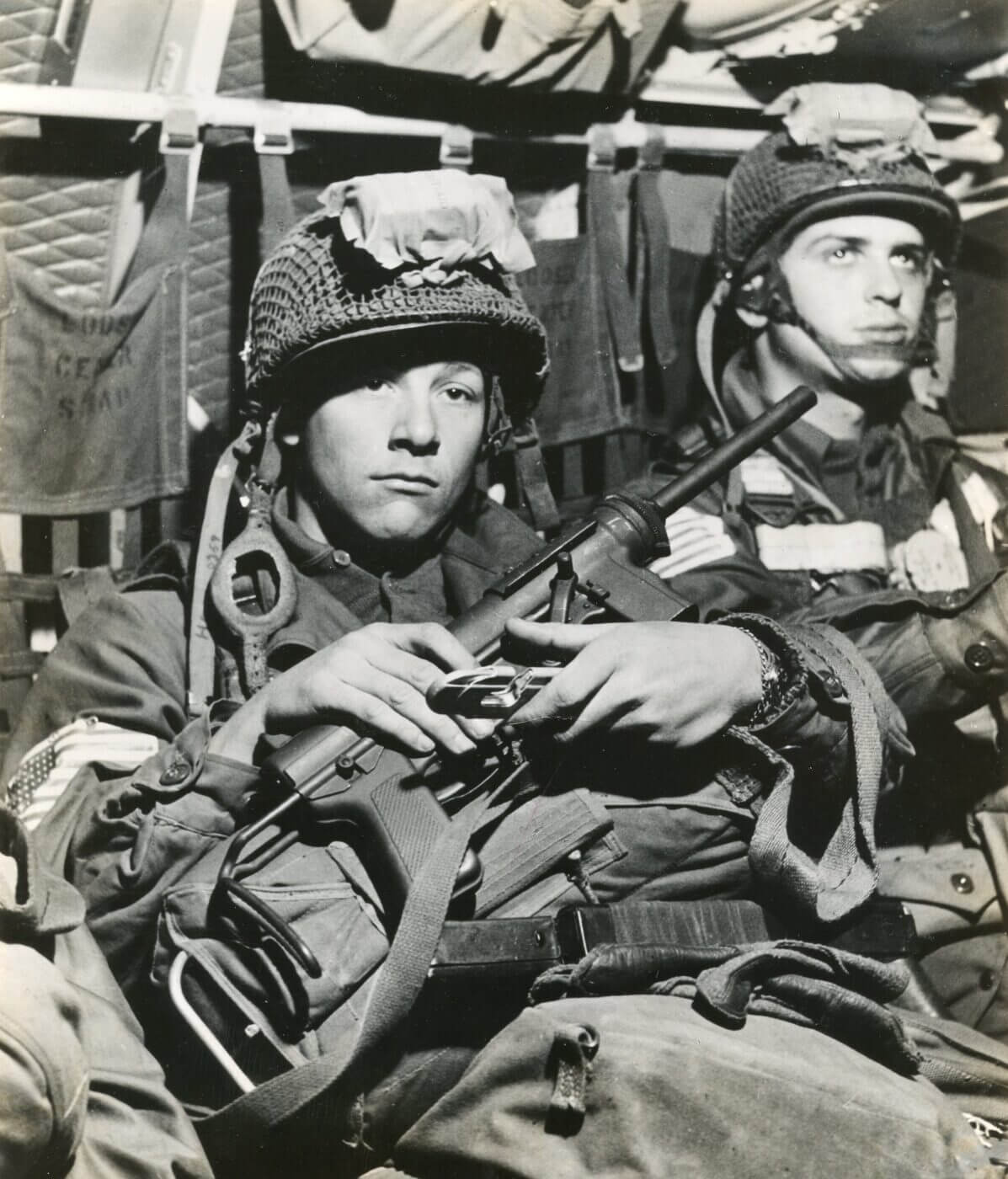
The M3 submachine gun on the way to Normandy, June 1944 in the hands of this paratrooper. Image: NARA
First, it was rather heavy the Model 1928 was a hefty 10.8 lbs., unloaded.
The second drawback was strategic in nature the Thompson was extremely expensive to produce.
Before the war, a single Thompson gun cost the U.S. government as much as $209.
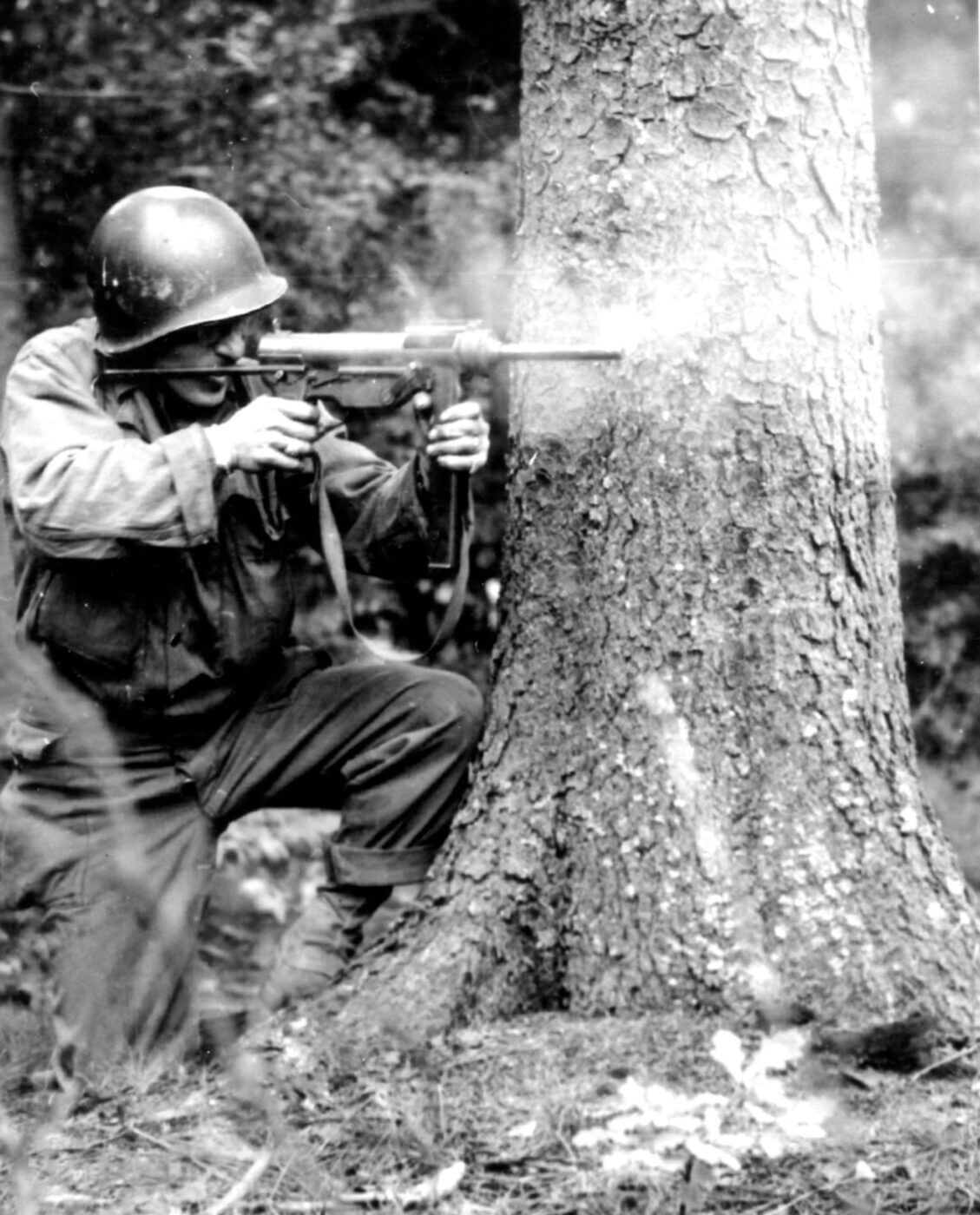
The M3 chugging out .45 ACP rounds at 450 rounds per minute. Image: NARA
The further simplified M1A1 brought down the price per gun to $45 apiece.
Colonel Studler put together a design team consisting of George Hyde and Frederick Sampson.
As it turns out, this was a perfect combination to create what would become the M3 submachine gun.
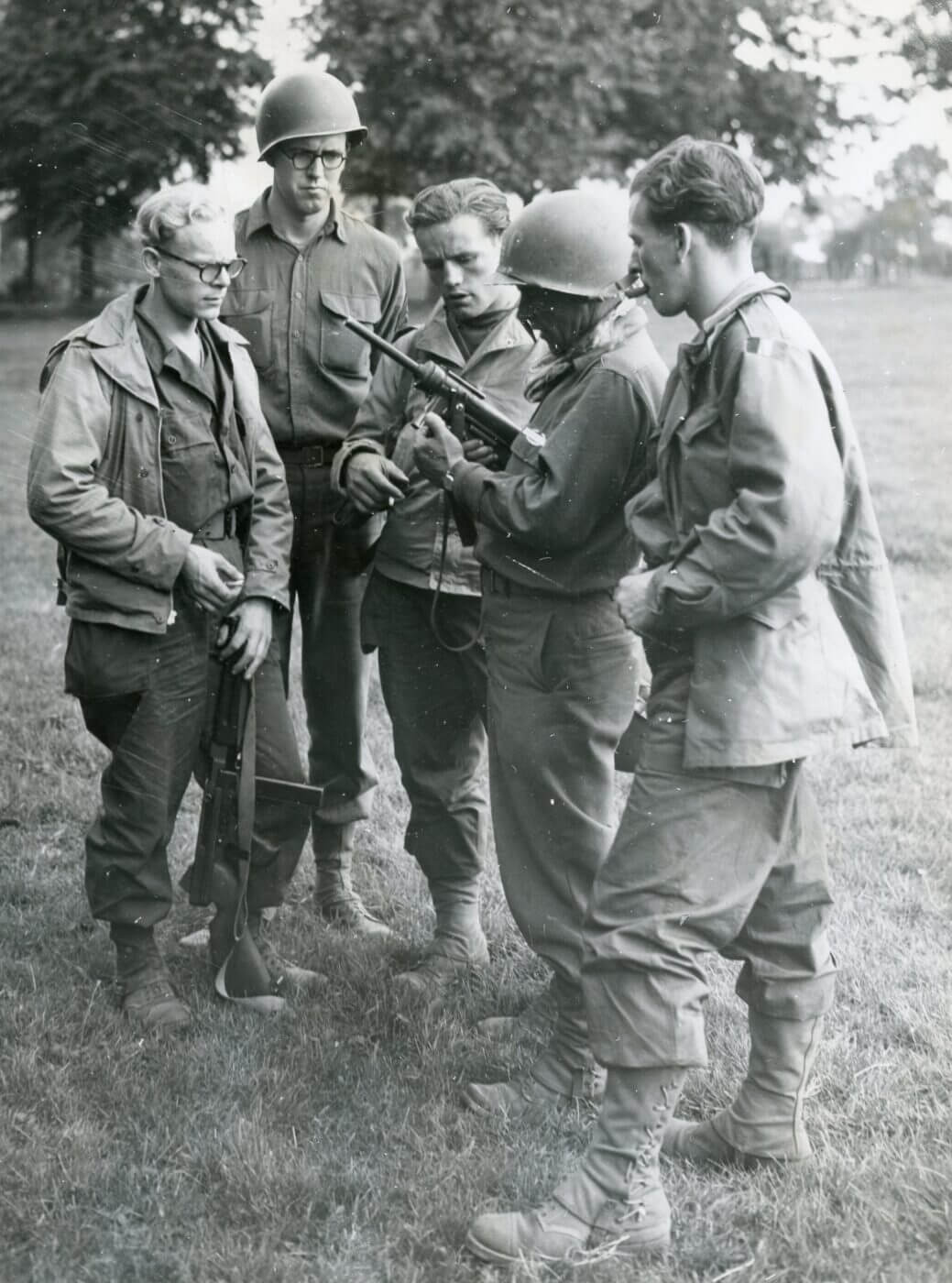
The M3 demonstrated to Belgian troops by the U.S. soldier in October of 1944. Image: NARA
Using readily available and non-critical materials, they developed a revolutionary new design in American firearms manufacturing.
This design could be subcontracted out to machine shops around the country for rapid production.
The Details
The M3 is a blowback weapon that fires from an open bolt in full-auto only.
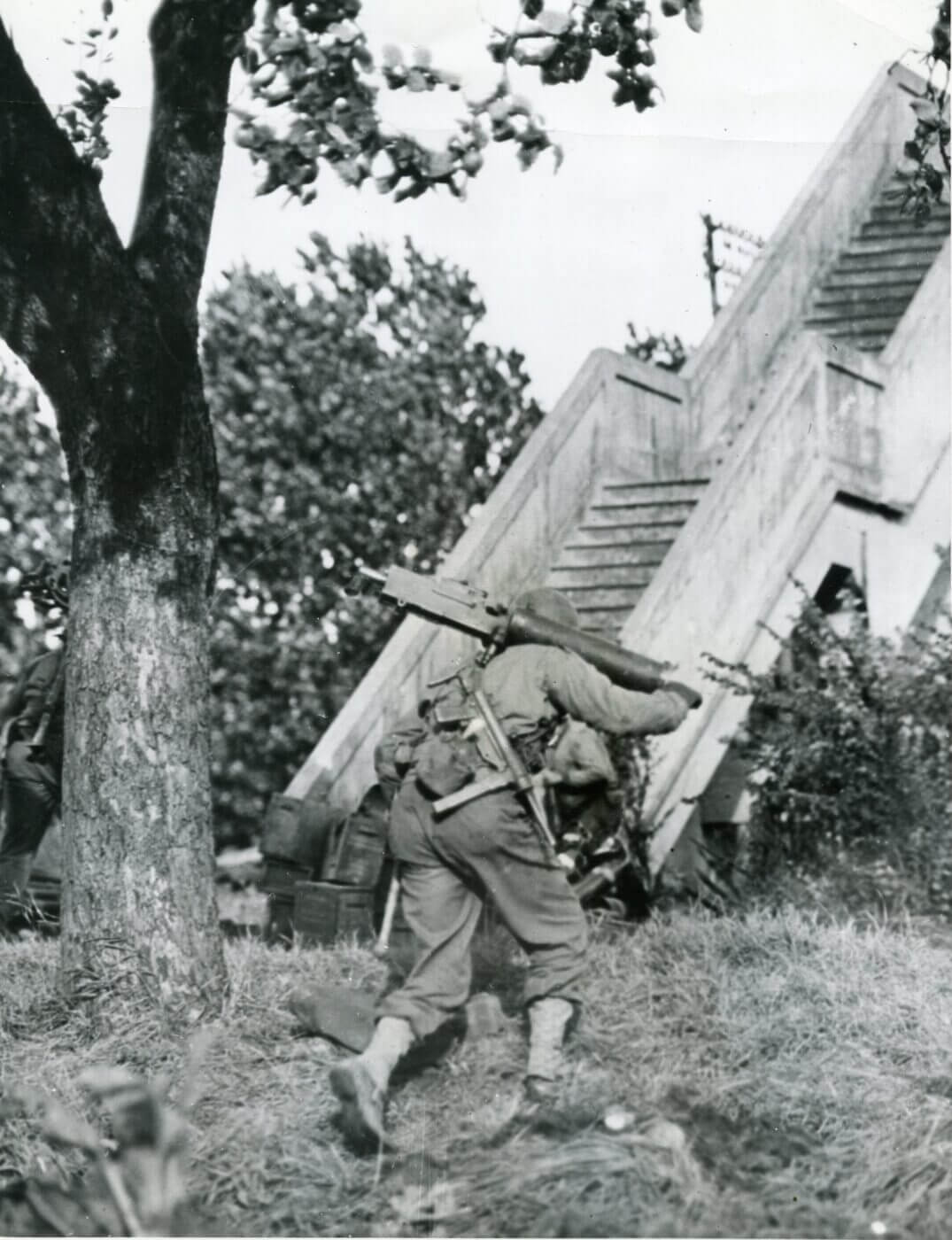
A Browning M1917 machine gunner carries his weapon along with a M3 SMG for personal defense. Belgium, September 1944. Image: NARA
The heavy bolt was carefully engineered so that it never struck the back of the tubular receiver.
Initial issues with the ejection port were corrected and this created a simple, but robust safety.
When the ejection port cover is open, then the weapon is ready to fire.
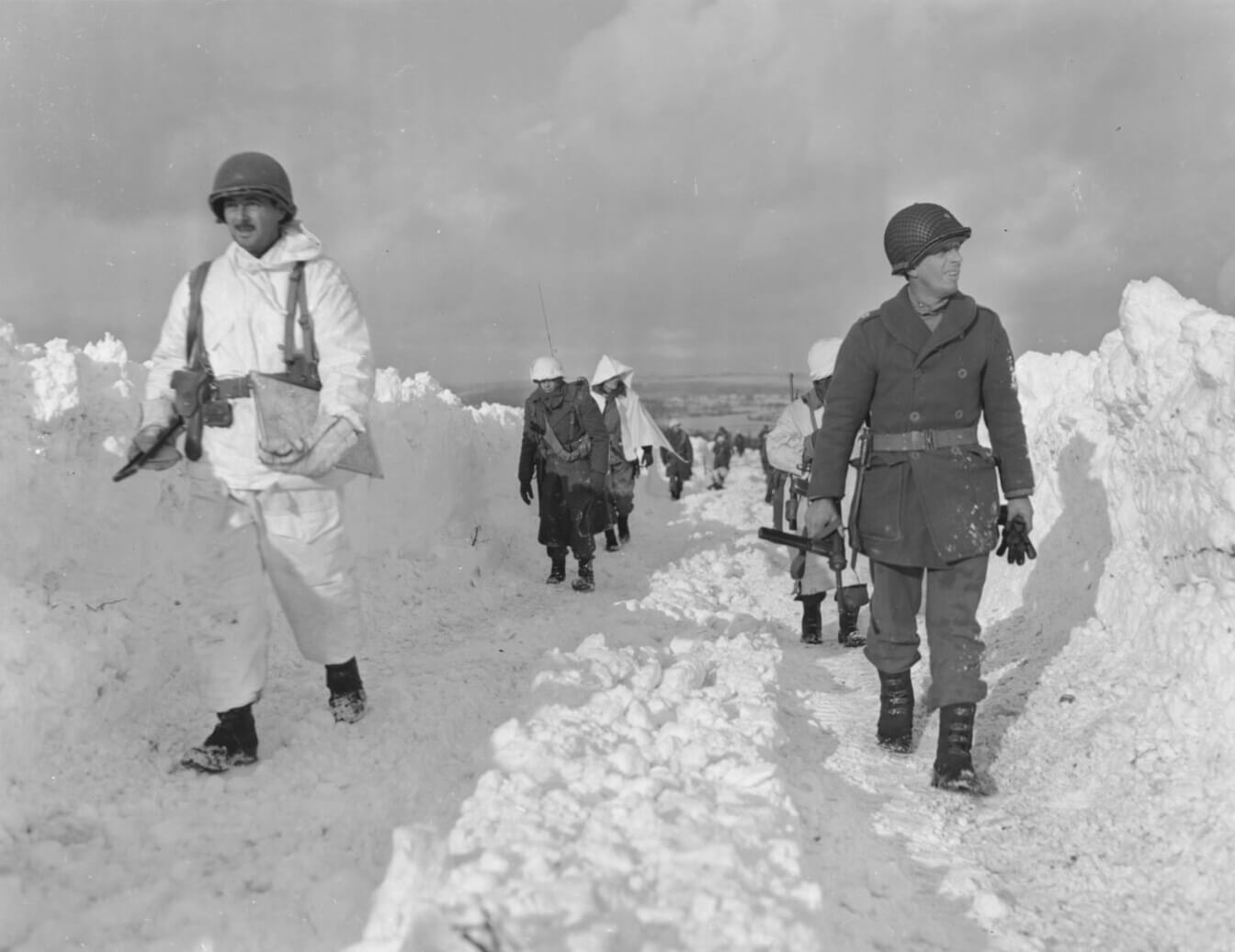
These M3 SMGs were carried outside of Bastogne during the Battle of the Bulge. Image: NARA
The M3 had two flaws that were corrected in the later M3A1.
The original designs cocking handle was complicated and fragile, and prone to breaking.
The improvements in the M3A1 were straightforward.
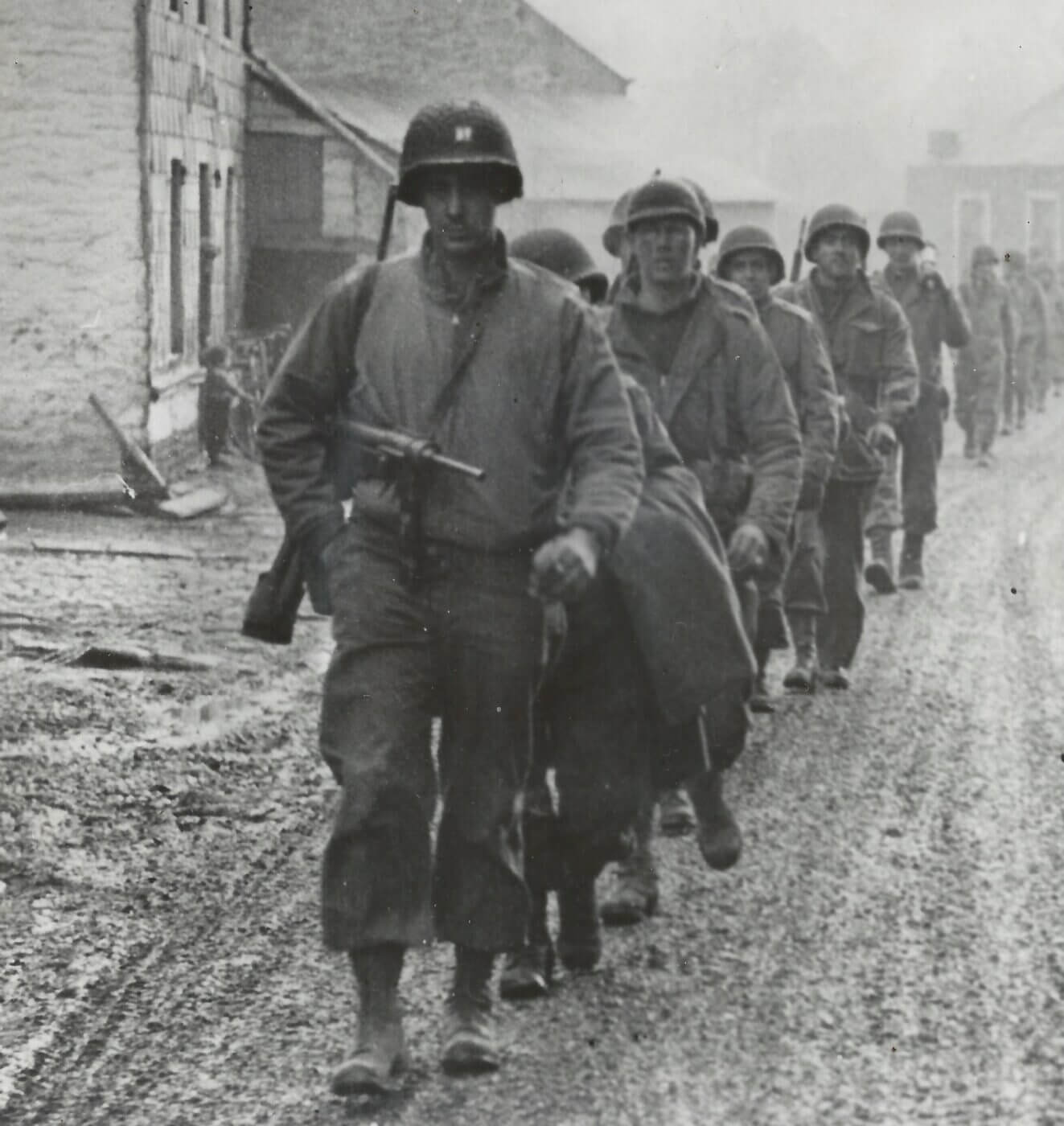
During the Battle of the Bulge, these troops march out of St. Vith with an M3-toting soldier leading the way. Image: NARA
Plastic caps were also issued to keep loaded magazines clean until they were ready for use.
The M3 proved to be a robust and reliable weapon.
However, this did not prove practical in combat.
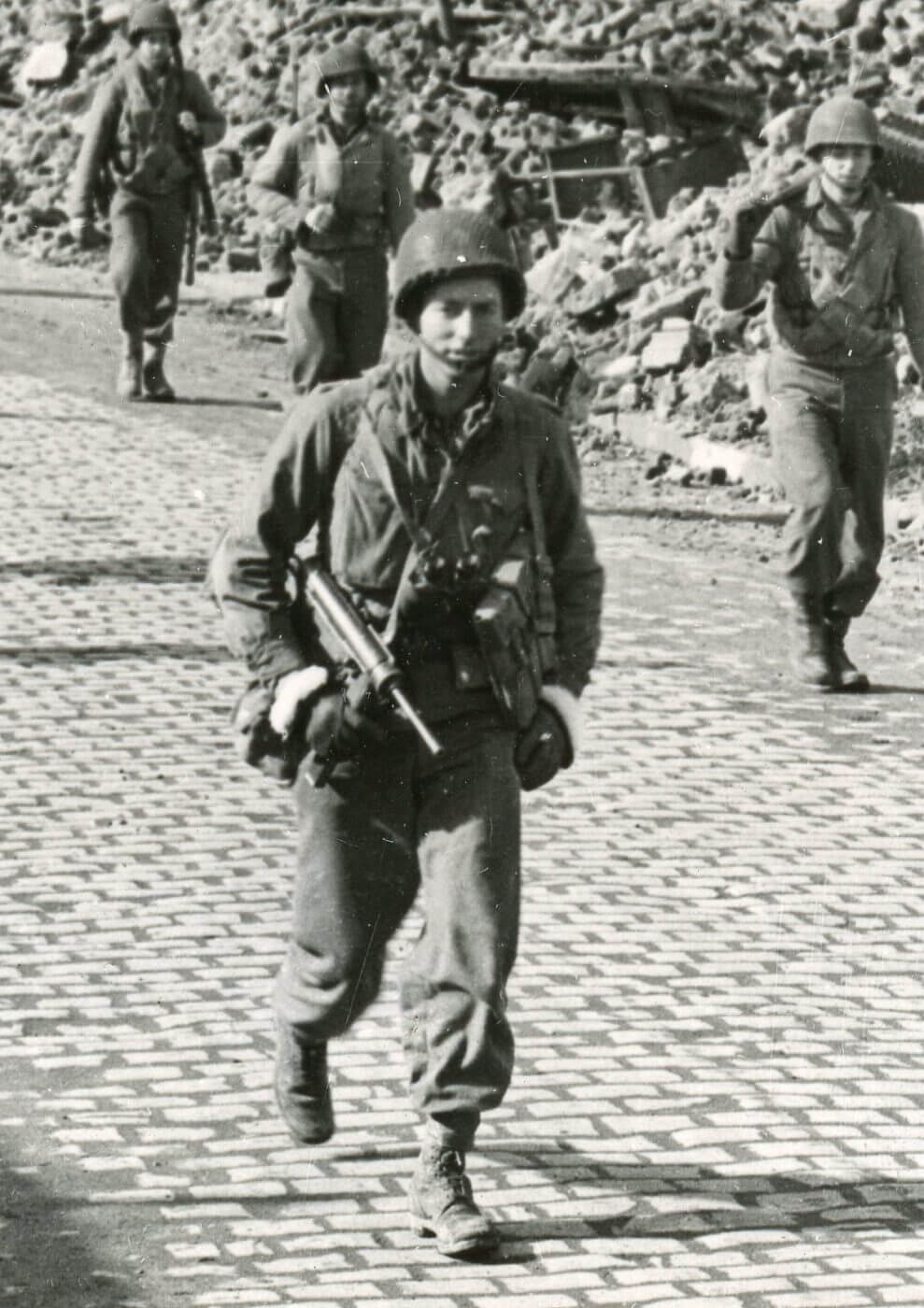
Seen carrying the M3, this U.S. soldier is marching into Germany with the 83rd Infantry Division during the spring of 1945. Image: NARA
M3 Experimentation
One seldom-mentioned M3 variation was the T29.
During World War II,Germany also made efforts to develop curved-barrel rifles.
Bell Labs also designed an integral suppressor for the M3, as this was also requested by the OSS.
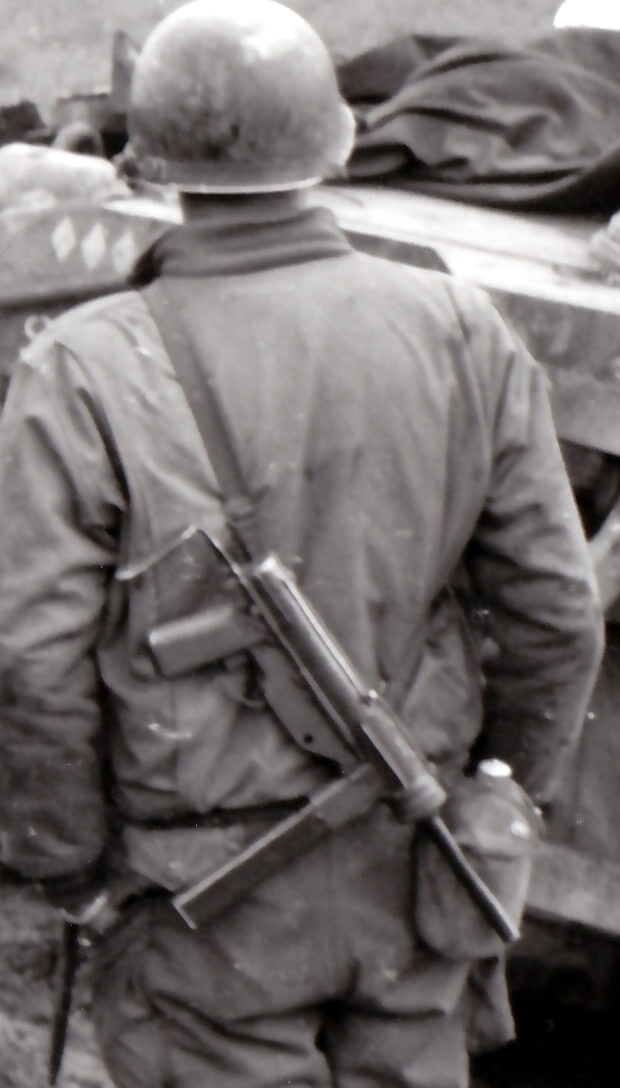
GI ingenuity: A M3 SMG field-modified with a slotted receiver to accept a traditional cocking handle. This soldier was with the 739th Tank Battalion during the spring of 1945. Image: NARA
These weapons were intended for use by OSS agents in their covert operations.
These guns were also were under consideration to be supplied to various resistance groups in Europe and Asia.
(See what might possibly be one of theseOSS suppressed M3 submachine guns found in the Philippines.)
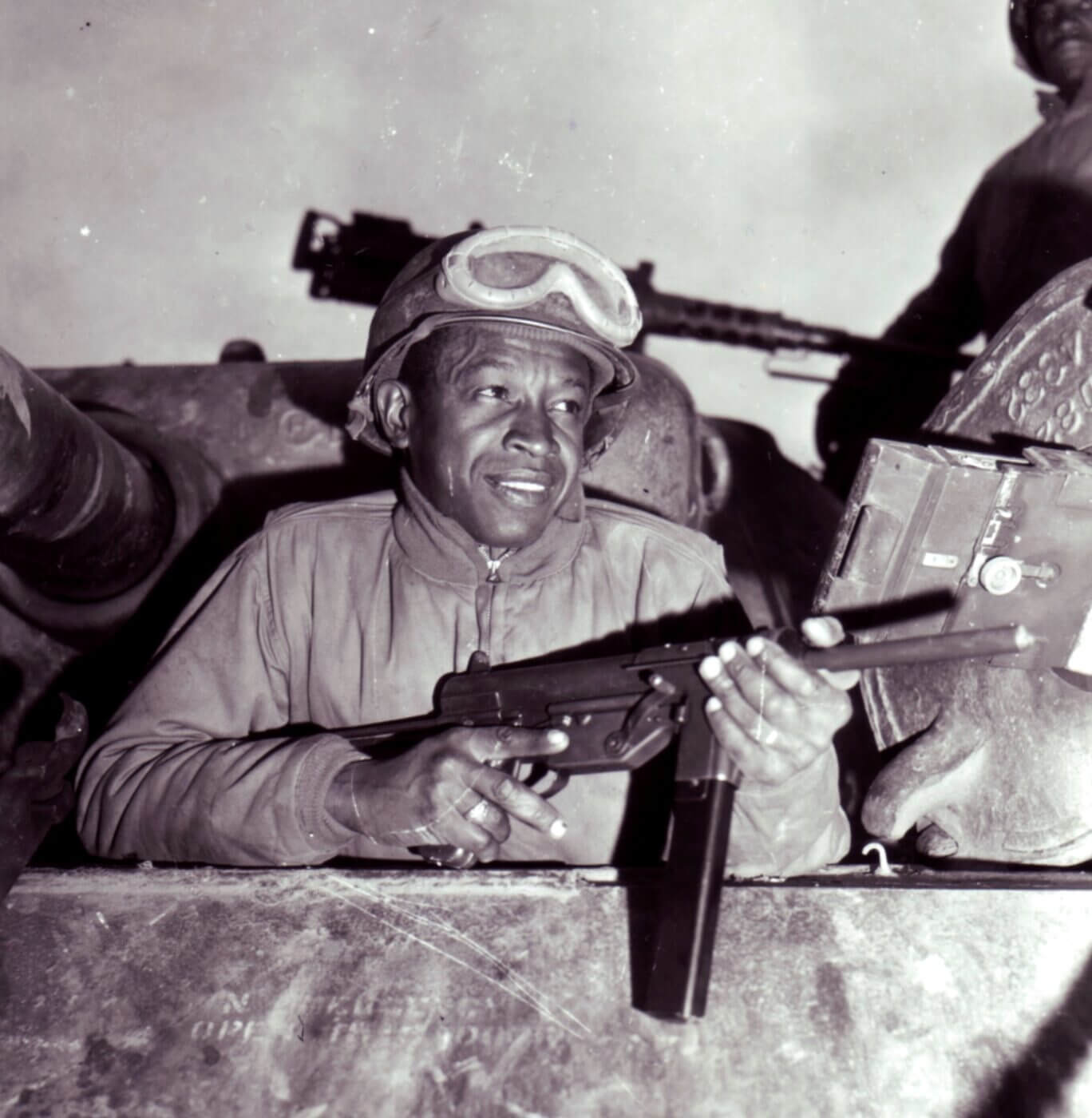
Many tank crewmen carried the M3 SMG. This Sherman tank driver is with the 761st Tank Battalion in France, 1944. Image: NARA
Meanwhile, it seemed that U.S.
The M14 rifle was tried, fitted out with a pistol grip and a folding stock.
Despite these efforts, nothing fit the bill particularly for armored vehicle crews like a true submachine gun.
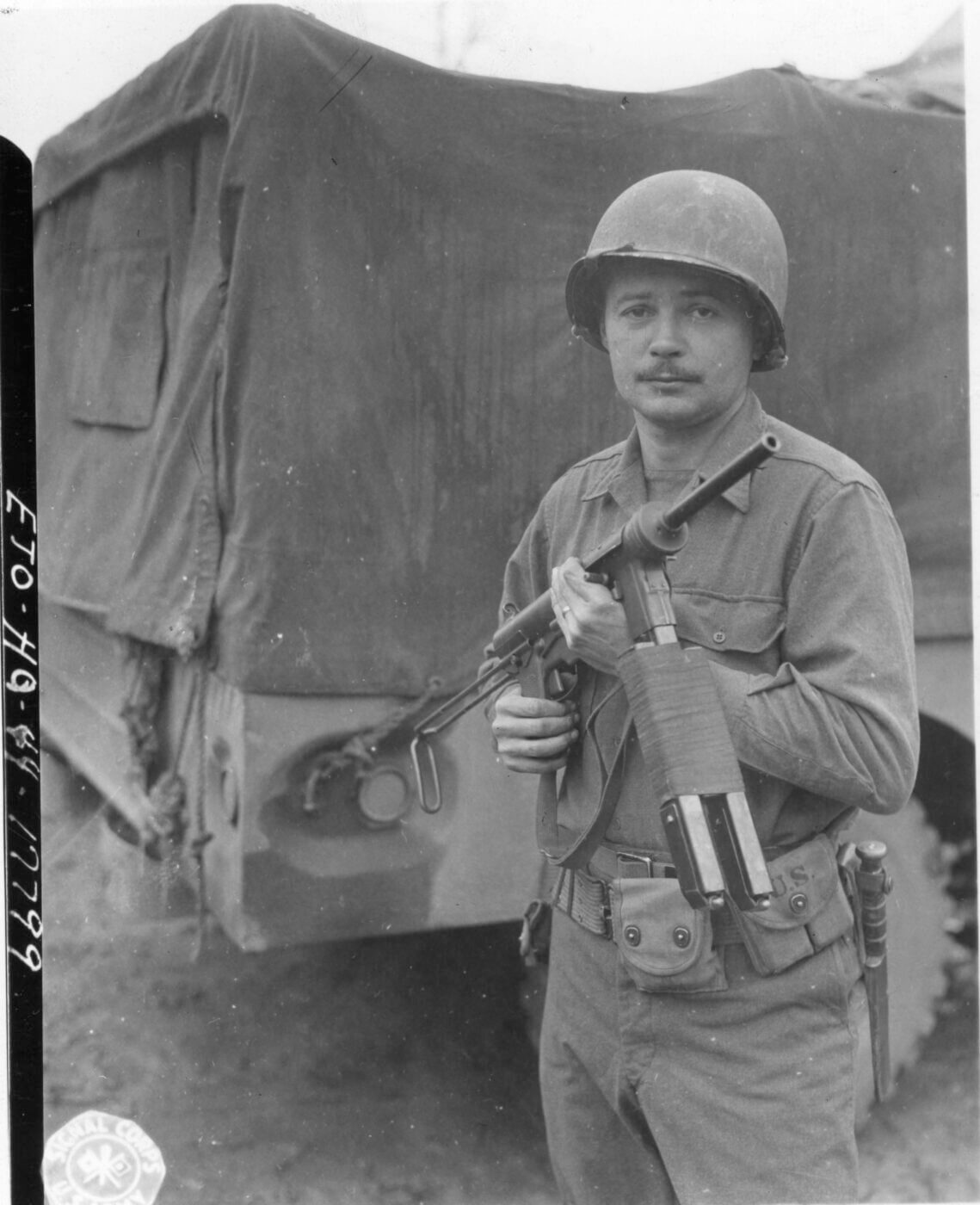
The “single-feed” M3 magazines were a continuous source of trouble as the feed lips were particularly fragile. Three magazines taped together in this fashion was rare. Image: NARA
Consequently, M3A1s could still be found in the weapon racks of U.S. armored vehicles even into the mid-1990s.
It is the United States answer to the British Sten gun and the German machine pistol 38.
It is crude in appearance, because its cost is less than that of a good automatic pistol.
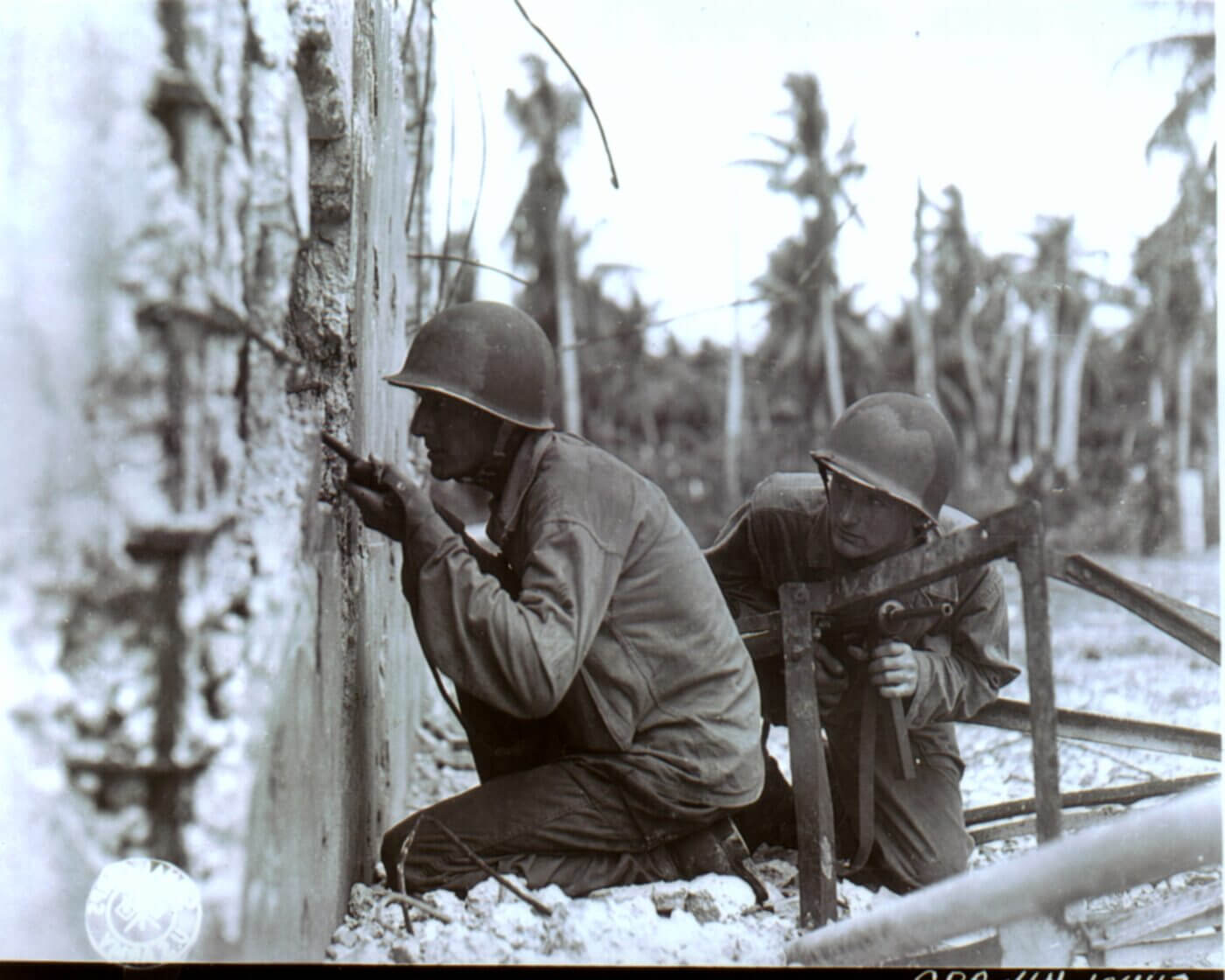
The M3 saw some service in the Pacific during World War II. These G.I.s of the 81st Division are seen on Ulithi Atoll during September 1944. Image: NARA
America had never produced such a utilitarian firearm before, and initially many troops had little faith in it.
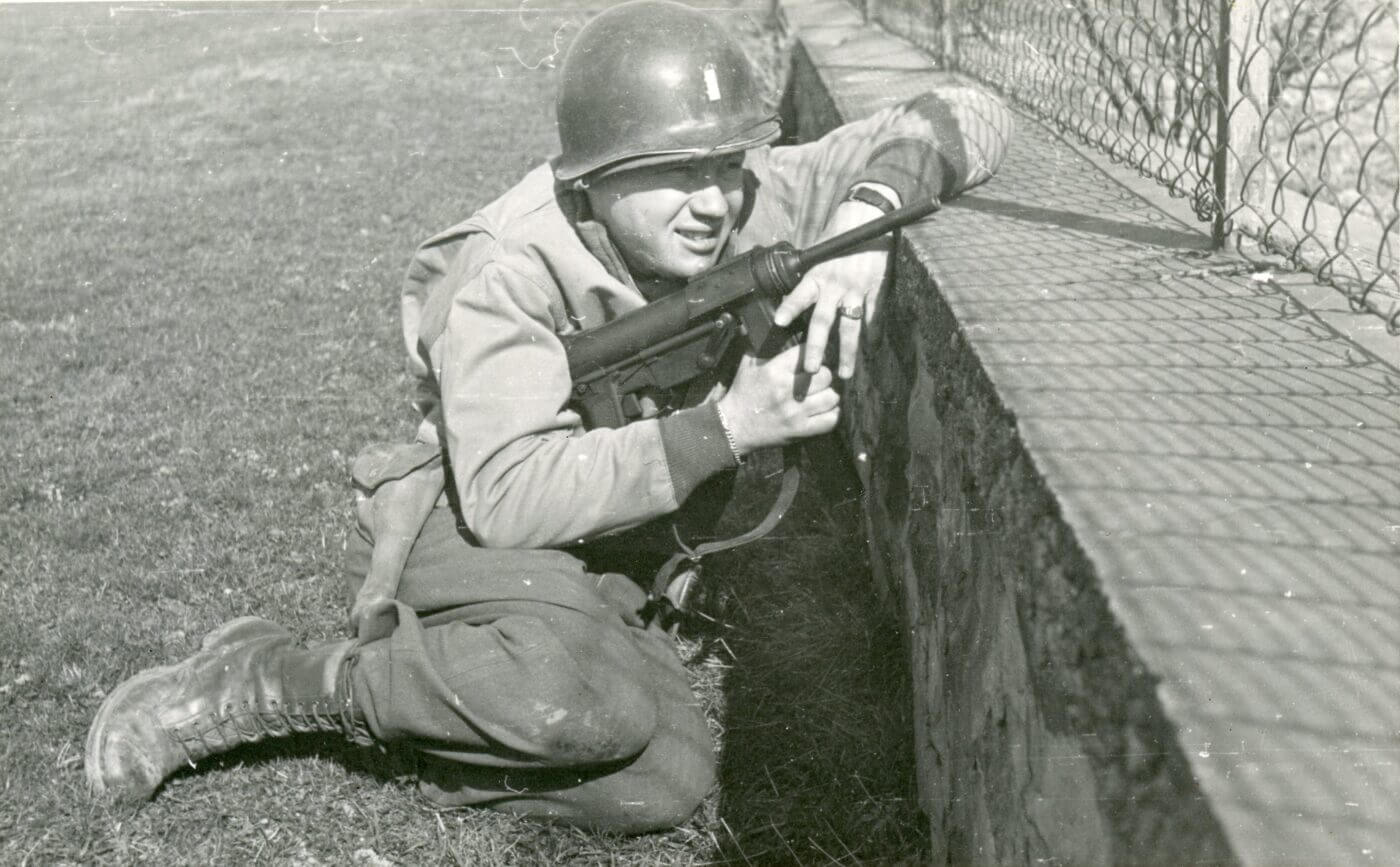
A young lieutenant armed with a M3 SMG in Germany during the spring of 1945. Image: Author’s collection
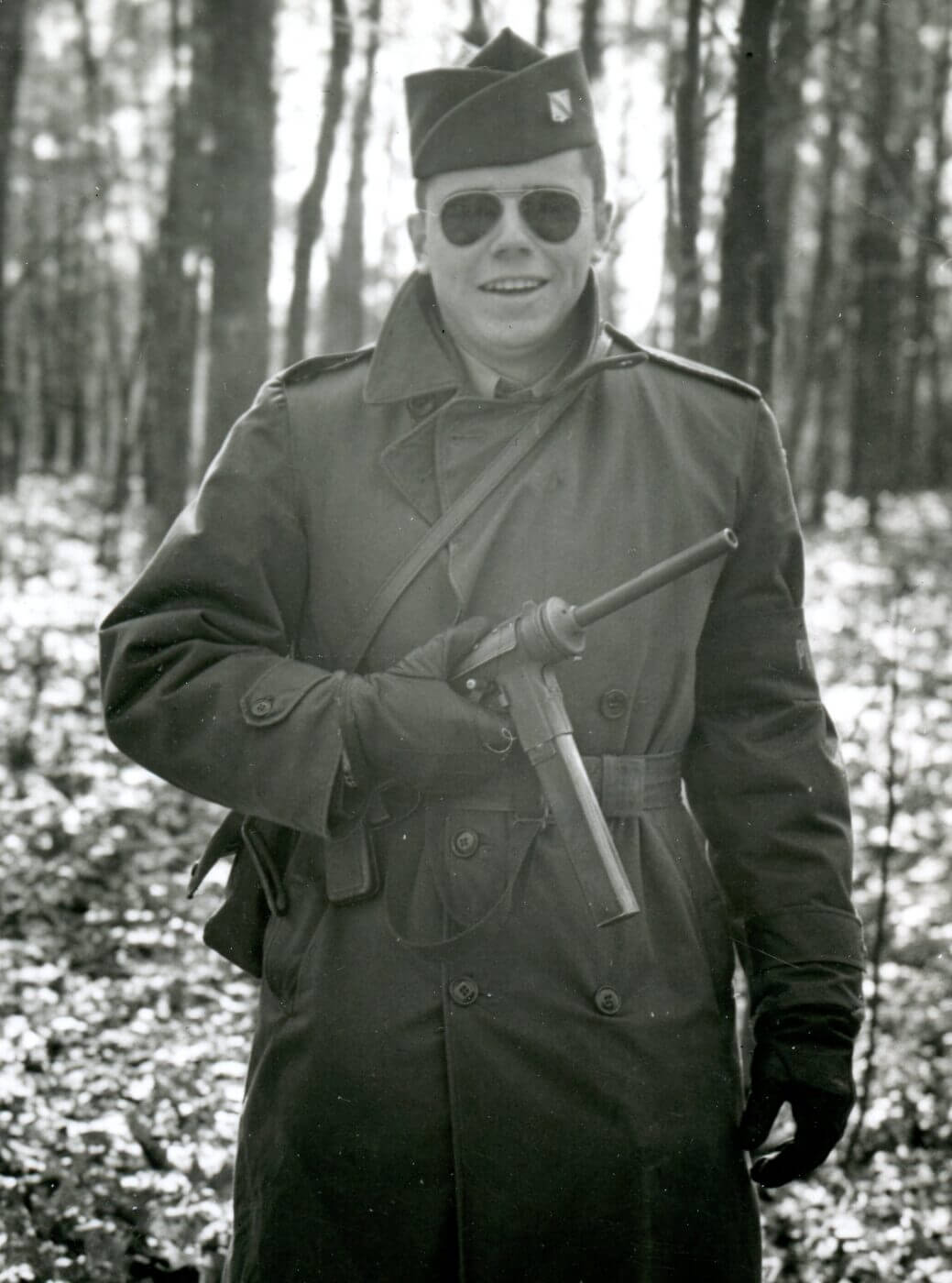
A G.I. armed with the M3 SMG in early post-war Germany. Image: Author’s collection
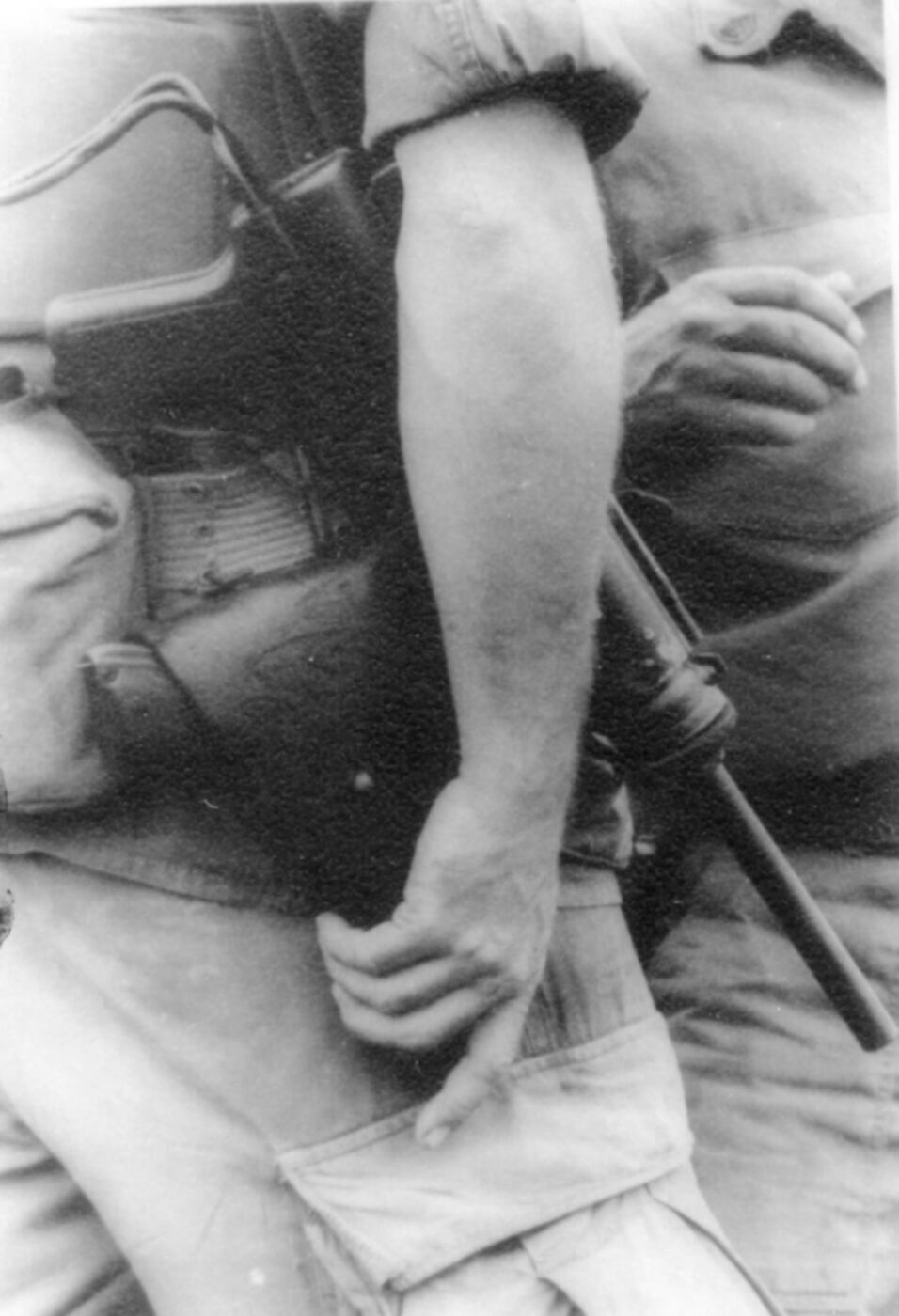
A Marine carries an M1911 pistol to go along with his M3A1 SMG in Vietnam during 1966. Image: NARA
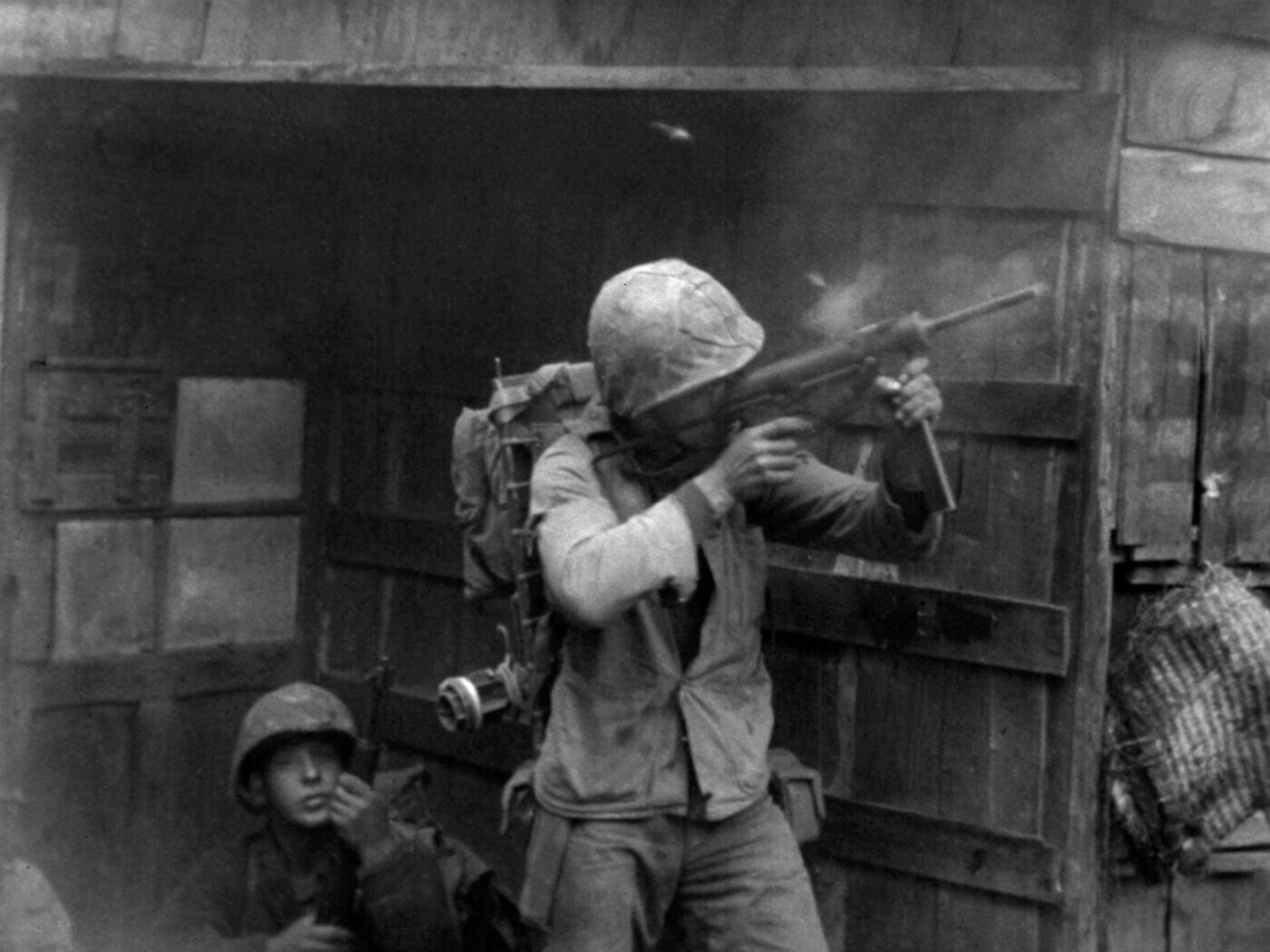
The Battle for Seoul: A Marine engages communist snipers during the Battle of Seoul during September 1950. Image: NARA




